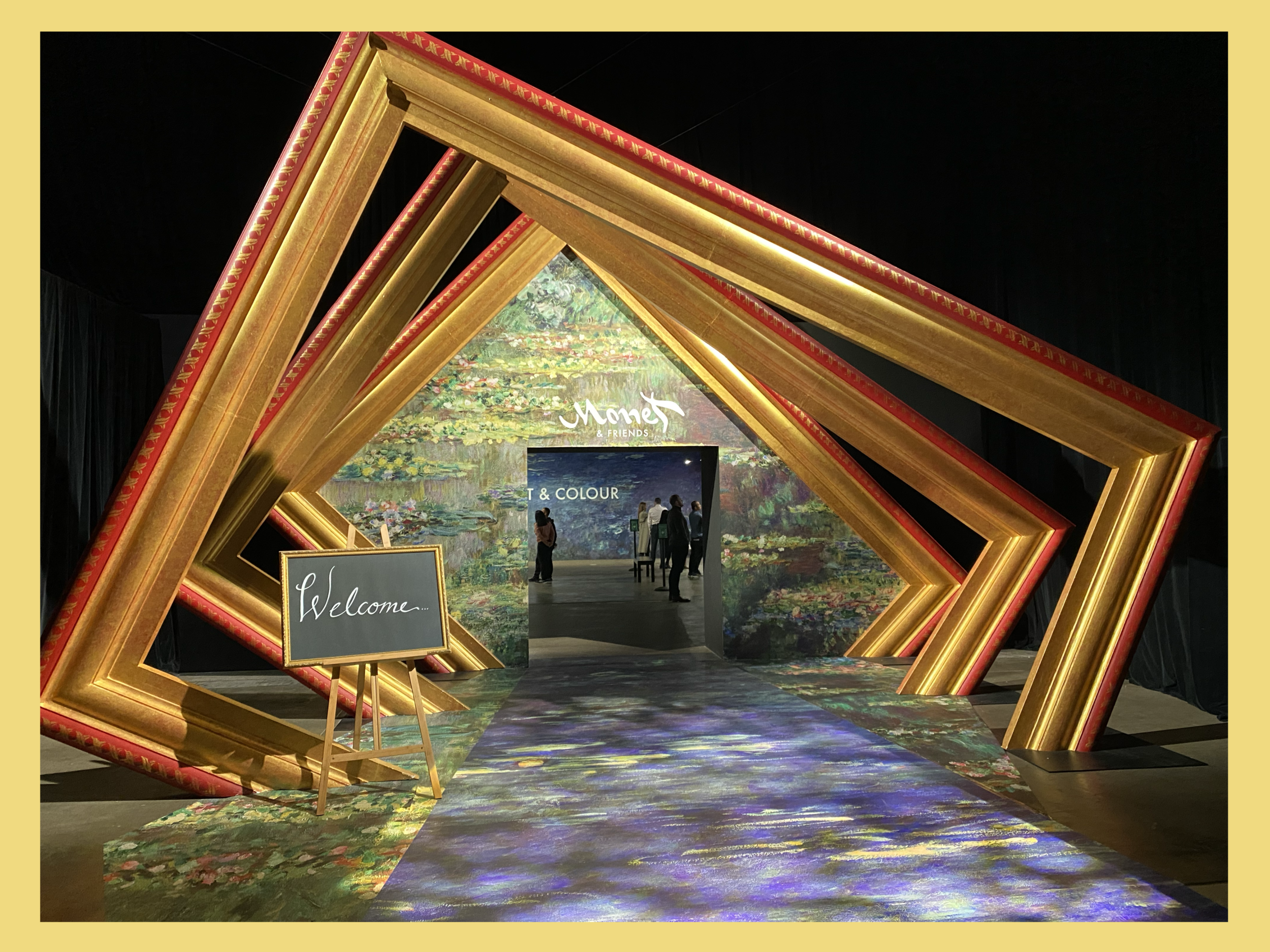Monet & Friends: Light, Life and Colour
Monet and Friends: Light, Life and Colour, at the Royal Hall of Industries in Moore Park, is the second show brought to Sydney by the group Grande Experiences. The first, Van Gogh: Alive, was the exact same concept of an immersive exhibition experience with artworks being displayed onto large projected screens. Instead of focusing on just one artist this time, this show includes fifteen of Monet’s contemporaries including Toulouse-Lautrec, Pissaro, Degas, Manet, Sisley and Cezanne.
Walking into the space there is a pre-show room where you can learn a little more about the artists whose work will be displayed. For the Monet show this includes a replica of the bridge found in Giverny which was frequently painted by the artist and appeared in many of his artworks. Visitors can take photos on the bridge before heading into the main attraction, a large room encircled with around forty giant screens that have been lit up by projectors. Overhead there is accompanying music which matches the displays. For the collection of Degas’ ballet paintings for example, the famous Swan Lake theme is played at the same time. There is also meant to be matching scents. According to Grande Experience the space is scented with notes of nutmeg, cardamom and cedarwood. Personally I never noticed any different smells when walking in, but I didn’t know to expect it either so if another of these exhibitions happen again I’ll need to pay more attention.
As John MacDonald - art writer for the Sydney Morning Herald - points out, compared to seeing the artworks in real life, it’s actually “more expensive — an adult ticket to this event costs $40, as opposed to the National Gallery of Australia’s Botticelli to Van Gogh, which will set you back $28.55.” It may cost $40 on weekdays, but on Fridays and the weekend this price jumps up to $55. Personally, this feels a little ridiculous for what the visitor gets from the experience. There is little educational content (there isn’t even text to tell you what paintings you’re looking at on the screen at any time), and the projectors are on rotation for just under an hour. There are few seats for visitors to sit down and enjoy watching the experience. This is not ideal when walking around you’re only going to see the same things you’d be seeing on the other side of the room anyway and it is really just something you’d prefer to sit down and get lost in. Due to the lack of seats my friend and I sat on the floor and watched it. It was an enjoyable way to pass the time and we did both find it a calming experience but not worth the price of admission.
While I think this particular experience is too expensive for what it is, I am looking forward to the future of digital exhibitions, especially within museum spaces themselves. It is clear from the audience numbers of Van Gogh: Alive (300,000 visitors over the three months it was open) that the demand is there and people are willing to spend the money to see these types of shows. Bill Paterson, Grande Experience’s CEO, says that 50% of the audience for Van Gogh: Alive were people in the age bracket of 20 - 35. In the recent Netflix show ‘Emily in Paris’, the main character attends the ‘Van Gogh: The Starry Night’ (not the same as Van Gogh: Alive) digital experience to put on her popular and quickly growing social media account. A digital experience known as The LUME will now be a permanent exhibition from June at the Indianapolis Museum of Art (rebranded in 2017 as "Newfields: A Place for Nature and the Arts"), and it’s Australian iteration will open this year at Melbourne Exhibition Convention Centre.






